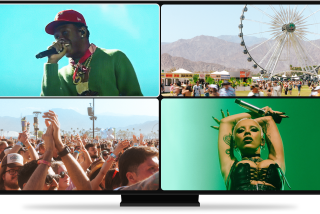YouTube isn’t for kids. But kids videos are among its most popular, study finds
Even though YouTube discourages children under the age of 13 from trawling its vast video library, content targeted at and featuring children under that age is among the most popular on the platform, according to a new study.
Videos appearing to appeal to viewers younger than 13 drew larger audiences and were posted by channels with more subscribers than content aimed at teen or adult audiences, despite making up only a small percentage of the total videos posted, the Pew Research Center found.
The findings appear at odds with YouTube’s explicit policy stating that its site is not for users younger than 13. They also come at a time of increased scrutiny for the company, as the FTC investigates YouTube’s handling of children’s content on its site.
The Pew study looked at data from YouTube channels with at least 250,000 subscribers during the first week of the year. The researchers found that, while only 2% of videos posted featured children under 13, these videos averaged three times as many views as other content. Videos that appeared to target children averaged 65% more views compared with those aimed at other audiences.
The study aimed to conduct an inventory and analysis of all content across popular YouTube channels. Along with the popularity of children’s content, it noted the prominence of non-English language videos on the platform, the large volume of video game-related content and the success of keywords such as “Fortnite” and “prank.”
Children’s content in the report was identified by a team of coders recruited through Amazon’s Mechanical Turk crowd-sourcing platform. The team relied largely on human instinct to categorize videos, according to the report’s lead author, Patrick Van Kessel, because of the difficulty of creating standardized criteria. “Things that would obviously qualify could be children’s animations, toys or simple games,” Van Kessel said. “You trust your gut. You know it when you see it.”
YouTube did not comment on the methods used by Pew, but a representative for the company said generally “the most popular video categories tend to be areas like comedy, music, sports and ‘how to.’ And we have always been clear YouTube has never been for people under 13.”
Josh Golin, executive director at the Campaign for a Commercial-Free Childhood, said the findings are further evidence that YouTube isn’t taking seriously laws that protect the privacy of young people. Golin was part of a battery of consumer-advocacy groups that sent the complaint letter sparking the FTC investigation into YouTube for violations of the Children’s Online Privacy Protection Act. He said that the platform’s stated age policy is largely a ploy to avoid complying with the law, which makes it illegal to collect data on children younger than 13 without parental consent.
“What you have now is YouTube, the most popular site in the world for children, very disingenuously claiming that it’s not a children’s site,” Golin said. “They’ve been playing this game for years.”
YouTube launched its YouTube Kids app in 2015 to address concerns over age-inappropriate content on its site. Despite parental controls and other features designed to make the app a more child-friendly experience, YouTube Kids has been a magnet for criticism over its advertising practices and ongoing issues with disturbing content. It is also relatively little used, according to a recent Bloomberg report citing unnamed sources at YouTube.
Golin said that YouTube Kids does little to address issues around YouTube’s management of children’s content. “First of all, it’s only an app. It’s not even a website, which is ludicrous,” Golin said. “If you are a responsible media producer and you want to get content for children onto YouTube, the only way is to upload it to the main site and hope that the algorithm takes care of it.”
More to Read
Inside the business of entertainment
The Wide Shot brings you news, analysis and insights on everything from streaming wars to production — and what it all means for the future.
You may occasionally receive promotional content from the Los Angeles Times.











